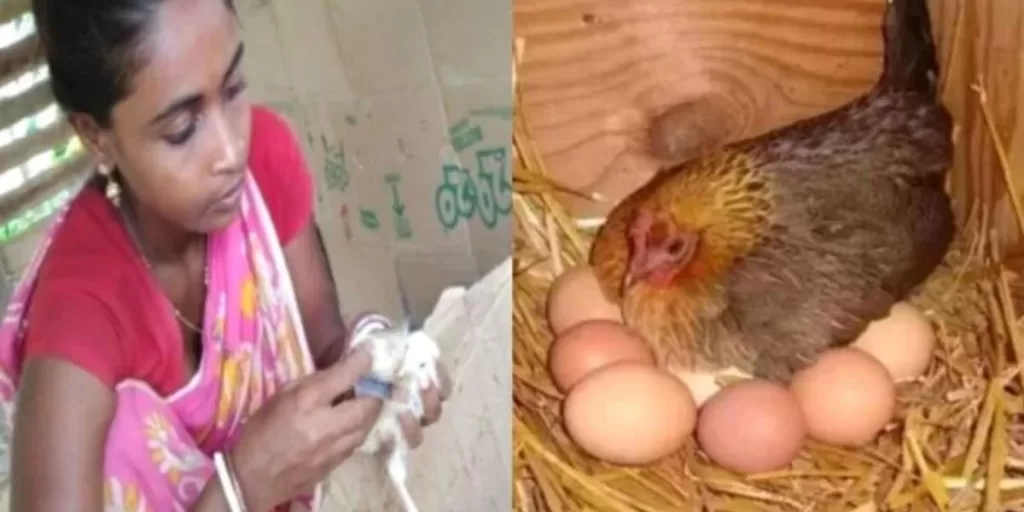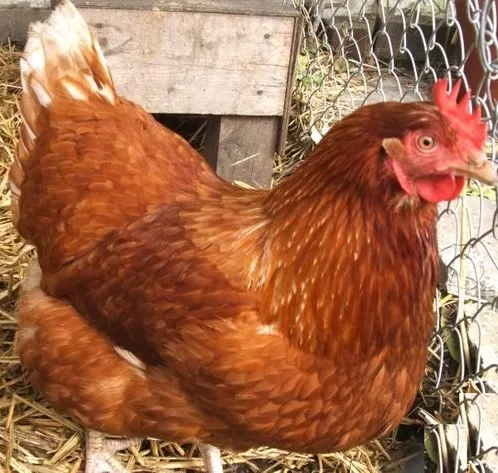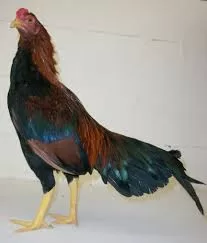Hyderabad: Broiler chicken is a big market in poultry business in India. Whereas desi chickens are more nutritious and profit making in terms of poultry business. Many institutions of the Government of India are doing research on poultry breeding and developed advance breeds. Efforts are made to develop indigenous improved varieties. We are discussing here some advanced poultry breeds developed by Govt Poultry Research Institutions.
The AICRP and Directorate of Poultry Research has been instrumental in developing chicken varieties for the upliftment of rural farmers for nutritional security and sustainable livehiloods. In this process, several chicken varieties like Vanaraja, Gramapriya, Srinidhi, Krishibro, Krishilayer, Swethasree and Vanashree were developed and popularized. Apart from these improved varieties, the Directorate is also engaged in the collection of native germ plasm, their purification, conservation and improvement through selective breeding. These native breeds possess better adaptability to rural conditions, are very hardy under low plane of nutrition and hence are used in the development of rural crosses


The food habits of rural families in our country are rice or wheat based making them deficient in protein, mineral and vitamins. Also the tribal/rural regions have good feed base for the backyard poultry rearing and these birds have the potential to convert the agriculture waste/biomass into highly delicious meat and egg rich is protein. Egg is the most balanced protein food available on this earth. It is highly essential for elders, young children and pregnant women.


Gramapriya is an egg laying variety with a potential to lay around 180 eggs annually. These birds have a light to dark brown plumage and are moderate in body weight making them easier to escape from predators. These birds are suitable for regions with abundant natural food base like the North eastern states. The male birds weighing 1.5-2.0 kgs at 6 months of age are suitable for tandoori type of dishes. Supplementation with calcium sources like lime powder, shell grit and stone grit is needed to minimize the incidence of broken or thin shelled eggs.


Krishibro is a multi-coloured and hardy meat type chicken variety developed for intensive and semi intensive poultry rearing. The multi-coloured feather pattern is preferred to white broilers in peri urban and rural areas due to native look, aesthetic acceptance, religious inclination and meat quality. These birds weigh around 1.5 kgs at 6 weeks of age with a feed conversion ratio of about 2.0. These birds often fetch premium price in niche markets compared to their white counterparts. Krishilayer is a commercial layer variety for intensive type of poultry farming developed from the elite white leghorn germ plasm developed in the Directorate and other centres of AICRP on Poultry breeding. These birds are capable of laying 280-300 eggs annually under the harsh climatic conditions. These birds are well adapted to our Indian farming conditions and are reasonably resistant to diseases.


Vanashree birds evolved from Aseel (PD-4) breed were improved both for growth and production performance for ten generations. Therefore, the Vanashree birds are improved dual purpose native chickens and they can be used both for meat and egg production purposes. They have attractive golden yellow coloured plumage; erect posture, long and thick neck, majestic gait, long shanks, short beaks; alert eyes, pea comb, red ear lobes, white skin and yellow shanks. These features resemble those of aggressive native chickens. Male birds have mostly golden coloured feathers in the neck (hackles) and in front of tail (saddle feathers) with black coloured tail (sickle) feathers. Female birds have uniform golden yellow coloured plumage. These birds thrive well in low input system of rearing
at free range, backyard and semi intensive systems of rearing in rural, tribal and peri-urban areas.
Meat and eggs of these chickens command premium price as compared to those of exotic ones due to high demand.


Pratapdhan: A dual purpose coloured bird suitable for Rajasthan developed by Maharana Pratap university of Agriculture and Technology, Udaipur. The birds attain 1.7-2.3 kgs body wight at 20 weeks of age and are capable of producing 160 eggs annually.
Jharsim: This dual purpose chicken variety was developed by Birsa Agriculture University, Ranchi to cater to the nedds of the tribals of Jharkand state. The birds weigh around 2.0-2.5 kgs at 20 weeks and they produce 165-170 eggs which is three times more than the production of native chicken.
Himsamridhi: The Choudhary Sravan Kumar Himachal Pradesh Krishi Vishwavidyalaya, Palampur has developed a dual purpose chicken variety suitable for the hilly mountains of the Himachal Pradesh. This bird weigh 1.5-2.0 kgs at 20 weeks of age has an annual production of 180 eggs.
Kamrupa: This multi-coloured dual purpose variety is developed by Assam Agricultural University, Guwahati and is highly suitable for the different agro climatic conditions of North Eastern India. Adult birds weigh around 1.8kgs at 20 weeks and produce 150 eggs annually.
Atulya: This is a commercial hybrid white egg layer bird developed by Kerala Veterinary and Animal ciences University, Mannuthy with a potential to lay more than 300 eggs annually. These birds are ideal for urban and peri urban areas for rearing in homestead cages.
Narmadanidhi: This variety was produced by Nanaji Deshmukh Veterinary Science University, Jabalpur for the state of Madhya Pradesh. These birds weigh around 2.0 kgs at 20 weeks and produce 180 eggs annually under backyard system of rearing which is four times more than the eggs produced by the local desi hen.
-Vijay Kumar














